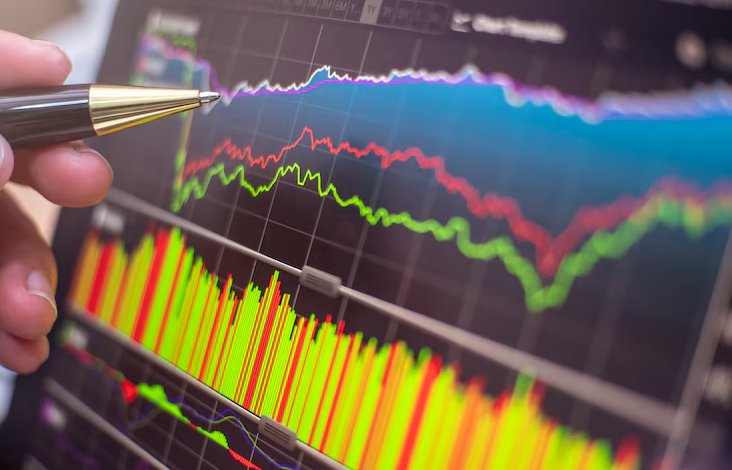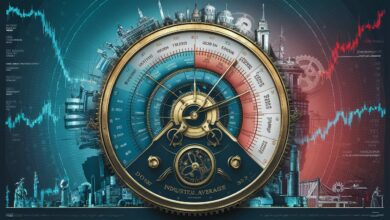The Dow Jones Industrial Average: America’s Economic Barometer Decoded

Introduction: The Unrivaled Legacy of the Dow
For over a century, the Dow Jones Industrial Average (DJIA) has transcended its role as a financial index to become a cultural icon—a daily pulse check of the U.S. economy. Created in 1896 by Wall Street Journal editor Charles Dow and his partner Edward Jones, the Dow began as a 12-stock index dominated by railroads, cotton, and sugar 15. Today, it tracks 30 blue-chip corporations, from Apple to Goldman Sachs, serving as a critical benchmark for investors, policymakers, and the public. Despite criticisms about its methodology, the Dow’s movements influence global markets, corporate strategies, and even consumer confidence. Its May 2024 breach of the 40,000 milestone underscored its enduring relevance in modern finance 28.
1. Historical Evolution: From Industrial Gauge to Economic Icon
The Dow’s transformation mirrors America’s economic shifts. Originally comprising industrial giants like U.S. Leather and Tennessee Coal & Iron, the index expanded to 30 components in 1928 as manufacturing fueled economic growth 57. The 1930s Depression triggered sweeping changes, with consumer staples like Coca-Cola joining to reflect evolving economic pillars. Post-1990s, technology reshaped the Dow: Microsoft (1999), Apple (2015), and recently Nvidia (2024) replaced legacy industrials like General Electric 27. Each change aimed to maintain the Dow’s representativeness—though it no longer focuses solely on “industrial” sectors, its components span technology (32%), healthcare (17%), and financial services (20%) 12. Historical crises also tested its resilience: The index plummeted 22.6% on Black Monday (1987) and 37% during the 2008 financial crash, yet consistently recovered, demonstrating blue-chip stability 28.
2. Component Selection: The Art of Curating Economic Relevance
Unlike rules-based indices (e.g., S&P 500), the Dow relies on qualitative judgments by a committee from S&P Global and The Wall Street Journal. Selection prioritizes:
- Corporate Reputation & Sustained Growth: Companies must exhibit leadership in their sectors and consistent earnings.
- Price Weighting Compatibility: High-share-price stocks receive preference to avoid distorting the index.
- Sector Balance: All major sectors (except utilities) must be represented 16.
Recent additions highlight this approach: Amazon joined in 2024 after Walmart’s stock split reduced its influence, while Nvidia replaced Intel to capture AI-driven semiconductor growth 27. Controversially, exclusions like GE (2018) after 110 years in the index drew scrutiny, revealing the committee’s opaque but pragmatic adaptation to economic shifts 67.
3. Calculation Methodology: The Divisor’s Invisible Hand
The Dow’s price-weighting distinguishes it from market-cap peers. Key mechanics include:
- Price-Weighting: A stock trading at $300 impacts the index tenfold more than a $30 stock, regardless of company size. For example, Goldman Sachs ($640) holds a 9.3% weight, while Verizon ($41) holds just 0.6% 12.
- The Dow Divisor: Originally 12, this constant adjusts for stock splits and dividends. At 0.152 in 2024, it converts the sum of all stock prices into the index value 26.
Critics argue this method distorts economic reality: UnitedHealth ($302, market cap $445B) has less influence than Goldman Sachs ($640, market cap $136B) solely due to share price 69. Still, proponents note its simplicity and historical continuity.
Table: Top 5 DJIA Components by Weighting (2024)
| Company | Symbol | Stock Price | Index Weight |
| Goldman Sachs | GS | $640.80 | 9.33% |
| Microsoft | MSFT | $477.40 | 6.95% |
| Caterpillar | CAT | $360.52 | 5.25% |
| Home Depot | HD | $349.62 | 5.09% |
| Visa | V | $338.57 | 4.93% |
| Source: SlickCharts 12 |
4. The Dow as a Market Barometer: Strengths and Limitations
The Dow’s 30 components generate over $2.5 trillion in annual revenue, employing millions globally. This scale enables it to correlate closely with broader indices like the Wilshire 5000, validating its role as an economic proxy 5. However, limitations persist:
- Narrow Scope: Covering 0.6% of U.S. stocks, it overlooks small/mid-caps driving innovation.
- Global Blind Spots: Multinationals like Apple derive 60% of revenue overseas, yet non-U.S. firms are excluded 113.
- Dividend Omission: The index ignores dividends, understating total returns. Studies show including dividends would place the Dow above 250,000 today 9.
Despite this, the Dow’s “Dogs of the Dow” strategy—buying the top 10 dividend-yielding stocks—often outperforms the index, leveraging its income potential 10.
5. Criticisms and Controversies: Flawed but Enduring
Detractors highlight structural biases:
- Price-Weighting Anomalies: A 10% surge in a $500 stock (e.g., Goldman Sachs) lifts the index 50 points, while the same move in a $50 stock (e.g., Intel) adds just 5 points, irrespective of market impact 69.
- Arbitrary Exclusions: Tesla’s absence despite a $700B market cap contrasts with IBM’s consistent inclusion despite stagnant growth 112.
- Sector Gaps: No utilities or pure-play energy firms remain after ExxonMobil’s 2020 exit 7.
Yet, the Dow’s survival stems from adaptability—its shift toward tech and healthcare (now 40% of components) mirrors GDP composition 12.
6. Investment Strategies: Harnessing the Dow’s Power
Investors leverage the Dow via:
- ETFs: The SPDR Dow Jones ETF (DIA) mirrors index performance at low cost.
- Options Strategies: Protective puts (long DIA + put options) hedge downturns, while covered calls generate income in flat markets 10.
- Global Hedging: Futures contracts offset risks from events like trade wars or rate hikes impacting multinational earnings 13.
Historically, the Dow delivered 259% returns from 2000–2024, trailing the S&P 500 (+285%) but with lower volatility—making it ideal for conservative portfolios 15.
7. Global Economic Influence: Beyond U.S. Borders
As a bellwether, the Dow reacts acutely to worldwide events:
- Trade Policies: Tariffs during the 2018 U.S.-China trade war sank the index 15% on industrial profit fears.
- Central Bank Shifts: Fed rate hikes in 2022 triggered sell-offs as higher borrowing costs squeezed corporate margins 13.
- Emerging Markets: Slumps in China’s growth can dent revenue for components like Apple and Caterpillar, pressuring the index 13.
Conclusion: The Future of a Financial Legend
The Dow Jones Industrial Average remains indispensable despite its quirks. Its curated components, historical resilience, and cultural cachet ensure ongoing relevance. While the S&P 500 offers broader market exposure, the Dow’s focus on elite corporations provides unique insights into economic leadership. As markets evolve, expect further modernization—perhaps weighting reforms or expanded sectors—to sustain its legacy.
Frequently Asked Questions
Q1: Why does the Dow include only 30 stocks?
Charles Dow viewed 30 as sufficient to represent market trends without excessive complexity. Early versions had 12 stocks, expanding in 1928 to capture industrial diversification 57.
Q2: How often do components change?
Changes are infrequent (59 times since 1896), driven by sector shifts or corporate decline. Recent trends show faster turnover (e.g., 4 changes since 2020) to address tech disruption 7.
Q3: Can the Dow’s price-weighting disadvantage investors?
Yes. It overemphasizes high-price stocks irrespective of company size. Switching to market-cap weighting would reduce Goldman Sachs’ influence and boost Apple’s 612.
Q4: How do dividends affect the Dow?
They don’t—the index ignores them. If reinvested dividends were included since 1928, the Dow would exceed 250,000 today versus its current ~42,000 9.
Q5: What triggers a stock’s removal from the Dow?
Sustained underperformance, loss of sector relevance, or corporate actions (e.g., mergers). AT&T was dropped in 2015 after shrinking telecom dominance; Walgreens replaced GE in 2018 amid declining industrial relevance 17.



